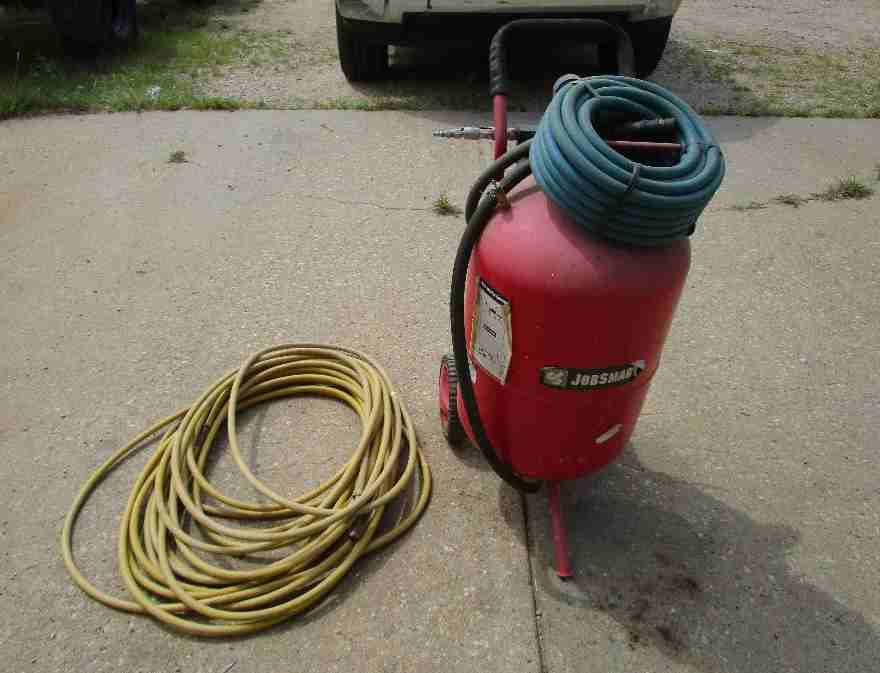Sandblasting is a process that uses high-pressure air and sand to remove paint, varnish, or other unwanted material from surfaces. A portable sandblaster is sandblasting equipment designed to be easily transported and used at different locations. Unlike traditional sandblasting equipment, typically large and stationary, these sandblasters are typically smaller and can be moved around as needed. As a result, they are commonly used for small-scale sandblasting projects.
Five Uses Of Portable Sandblasters
- Surface preparation: These sandblasters are often used to prepare surfaces for painting or coating by removing old paint, rust, or other contaminants. They can also clean and smooth concrete surfaces, preparing them for staining or sealing.
- Automotive restoration: These sandblasters can remove paint and rust from cars, trucks, and other vehicles, preparing them for repainting or restoration. They can also be used to clean and restore metal parts and engines.
- Industrial cleaning: Sandblasters are used in various industrial settings to clean and prepare machinery and equipment, removing rust, scale, and other contaminants.
- Graffiti removal: They can remove graffiti from buildings, walls, and other surfaces, without damaging the underlying material.
- Glass etching: These sandblasters can be used to etch designs onto glass surfaces, creating custom designs for windows, mirrors, and other glass items.
These are some of the common uses of these handy sandblasters. However, they can also be used for other applications, such as cleaning and restoring brick and stone surfaces, removing coatings from wood surfaces, and many more.
Key Features
- Mobility: One of the critical features of these sandblasters is their mobility. They are designed to be easily transported and used at different locations, making them versatile and convenient for various small-scale projects.
- Abrasive media tank: The sandblasters typically have a pressurized tank or hopper that holds the abrasive media, such as sand, used to clean or prepare surfaces.
- Blasting nozzle: A blasting nozzle is also an important feature. It directs the abrasive media at the surface to be cleaned or prepared.
- Control valve: These sandblasters typically have a control valve to adjust the pressure and flow rate of the blasting media, allowing for more precise and efficient cleaning or preparation.
- Safety features: These often include safety features, such as goggles, respirators, and dust collectors, to protect the operator and the surrounding environment from the dust and debris created during the blasting process.
How To Find A Sandblaster-Providing Service Company?
There are several ways to find a sandblaster service company.
- Online search: Use search engines like Google or Bing to search for “sandblaster service companies” or “sandblasting services” in your area. This will give you a list of companies that offer sandblasting services and their contact information.
- Yellow Pages or Local Business Directories: Check the Yellow Pages or other local business directories for sandblasting companies in your area.
- Referrals: Ask friends, family, or colleagues if they know of reputable sandblaster service companies.
- Industry-specific directories: Look for industry-specific directories such as the “Fabricator” or “Manufacturing Today” for sandblaster service companies in your specific field.
When searching for a sandblaster service company, it’s essential to check their credentials, experience, and reputation. You should also ask about their insurance coverage, safety protocols, and the type of equipment they use to ensure that they meet your requirements. It is also recommended to ask for references and to check them before hiring a company.
Wrapping Up
A portable sandblaster is convenient and affordable for various cleaning and surface preparation tasks. They are versatile, mobile, and easy to use, making them ideal for small businesses and individual contractors. However, it is essential to consider the power, efficiency, and safety measures before purchasing them.
